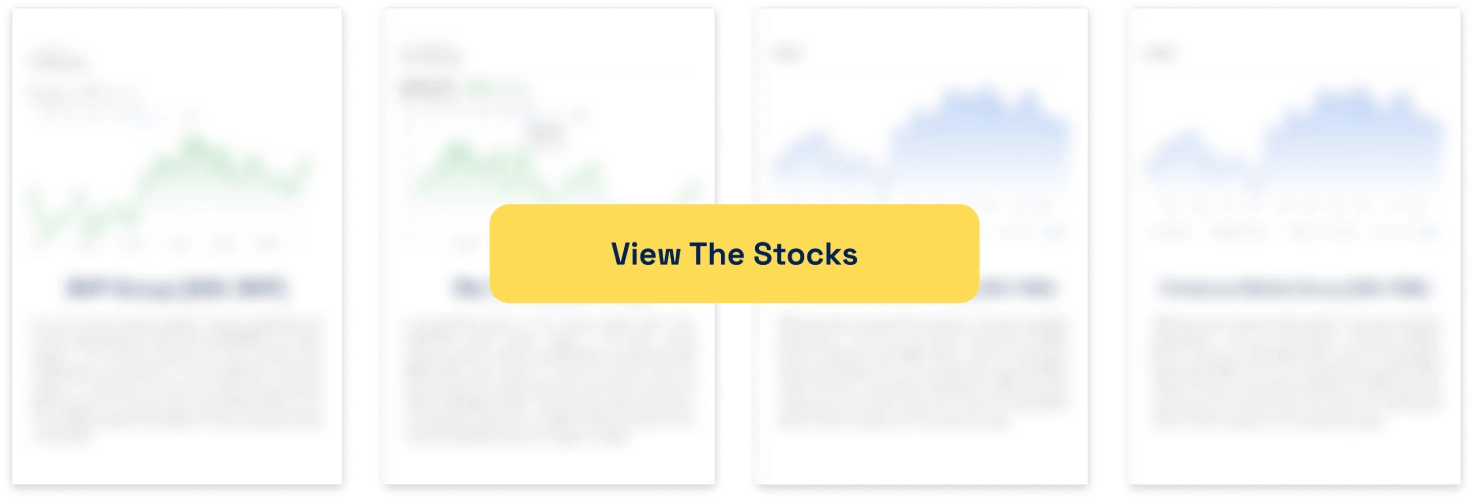Here are 9 of the most famous speculative bubbles in history and what investors can learn from them
![]() Nick Sundich, November 5, 2025
Nick Sundich, November 5, 2025
Speculative bubbles are a common occurrence in financial markets. Investors are wondering if the AI boom is another one of those precisely because bubbles have happened before and more will occur even if AI is not one of them.
We thought we’d put together a list of 9 of the most famous speculative bubbles in history and what investors can learn from them.
What are the Best ASX Stocks to invest in?
Check our buy/sell tips
Here are 9 of the most famous speculative bubbles in history
1. Dutch Tulip Mania (1630s)
The Dutch Tulip Mania is often regarded as the first recorded speculative bubble in financial history. In the early 17th century, the Netherlands was at the height of its economic and cultural power, and tulips — newly introduced from the Ottoman Empire — became a coveted luxury good. Their vibrant colors and rarity, especially of certain patterned varieties caused by a viral infection (now known as “tulip breaking”), made them highly desirable among the wealthy merchant class.
By the mid-1630s, speculation in tulip bulbs exploded. Futures contracts emerged, allowing traders to buy and sell bulbs that hadn’t yet been planted or harvested — essentially early derivatives trading. Prices spiraled upward to the point where rare bulbs could sell for the price of an Amsterdam townhouse or even more. The market expanded beyond the elite, drawing in middle-class citizens and artisans hoping to profit.
However, in February 1637, confidence suddenly evaporated. Buyers failed to show up at bulb auctions, and prices collapsed almost overnight — in some cases falling more than 90%. Those who had purchased bulbs or futures at high prices were left with assets worth a fraction of their cost, leading to widespread financial distress.
While the economic fallout was limited compared to later bubbles, Tulip Mania became a powerful cautionary tale that has not been heeded.
2. South Sea Bubble (1720)
The South Sea Bubble of 1720 stands as one of the most infamous financial crises in British history — a tale of greed, deception, and misplaced optimism. The South Sea Company was established in 1711 to consolidate and reduce Britain’s national debt, which had ballooned after the War of the Spanish Succession. In exchange for assuming part of this debt, the company received a government-backed monopoly on trade with Spanish South America — “the South Seas.”
In reality, this trade opportunity was limited: Spain tightly controlled access to its colonies, and profits were far smaller than investors imagined. Yet the company’s directors, backed by political connections and skillful promotion, exaggerated its prospects. In 1720, the company offered to take over even more of Britain’s national debt in exchange for issuing new shares. Investors, including nobles, merchants, and even members of Parliament, scrambled to participate.
Share prices soared from £100 in January 1720 to over £1,000 by August, fueled by speculative frenzy and the belief that the company was backed by royal favour. Other dubious “bubble companies” — promising everything from perpetual-motion machines to schemes for extracting silver from lead — appeared overnight.
By autumn, reality set in. The company’s profits were negligible, and confidence collapsed. The stock plummeted back to around £100, wiping out fortunes across the country. Among the victims was the great scientist Isaac Newton, who famously lamented, “I can calculate the motions of the heavenly bodies, but not the madness of people.”
The scandal led to public outrage, parliamentary inquiries, and early financial regulations designed to curb speculation and insider manipulation — a legacy that echoes through modern securities law.
3. Mississippi Bubble (1719-1720)
The Mississippi Bubble unfolded almost simultaneously with the South Sea Bubble. France was burdened by massive national debt and a stagnant economy. John Law an influential economist and adventurer who had risen to immense influence, proposed a bold solution: create a central bank that could issue paper money backed by the confidence of the public, rather than by gold or silver.
In 1716, he founded the Banque Générale (later the Banque Royale), and in 1717 he established the Mississippi Company, which was granted a monopoly on trade and resources in the vast French territories of North America — particularly the Mississippi River region, which Law touted as rich in gold, silver, and other treasures.
The company’s shares were sold in exchange for government debt, and Law’s bank issued new paper money to facilitate purchases. As enthusiasm grew, share prices skyrocketed — at one point, the company’s stock rose more than 20-fold within a year. Paris was gripped by speculative mania; investors from all walks of life crowded the Rue Quincampoix to trade shares.
But the promised riches from the New World never materialized. The flood of paper money led to inflation, and confidence in Law’s system evaporated. By 1720, the bubble burst: shares collapsed, the currency lost value, and France’s economy plunged into chaos. Law fled the country in disgrace.
The Mississippi Bubble’s collapse destroyed public faith in paper money for decades and underscored the dangers of excessive monetary expansion, financial speculation, and government-backed hype — lessons still relevant to modern markets.
4. Roaring 20s and the Great Depression
The Wall Street Crash of 1929 marked the end of the exuberant Roaring Twenties, a decade of rapid industrial growth, consumerism, and speculative mania in the United States. Following World War I, the U.S. emerged as a global economic powerhouse. Rising incomes, new technologies (like automobiles, radios, and household appliances), and widespread optimism drove both consumption and investment.
During the 1920s, stock ownership expanded beyond the wealthy elite. Ordinary Americans began buying shares, often on margin — borrowing up to 90% of the purchase price from brokers. This leverage amplified both gains and risks. Newspapers and radio programs glamorised the stock market as a path to wealth, and companies listed on the New York Stock Exchange saw their prices soar. The Dow Jones Industrial Average nearly quadrupled between 1924 and its September 1929 peak.
However, the underlying economy could not justify such valuations. Agricultural prices were falling, industrial production was slowing, and corporate profits were stagnating. When confidence began to waver in October 1929, panic selling ensued. The infamous “Black Thursday” (October 24) and “Black Tuesday” (October 29) saw billions of dollars wiped out in a matter of days.
The crash was devastating: the Dow lost almost 90% of its value by 1932. Thousands of banks failed, wiping out savings; unemployment soared to 25%; and global trade collapsed. The event triggered the Great Depression, reshaping the world economy and leading to major reforms in U.S. financial regulation.
Key responses included the Glass-Steagall Act (separating commercial and investment banking), the Securities Act of 1933, and the creation of the Securities and Exchange Commission (SEC) in 1934 — establishing the framework of modern market oversight.
5. Japanese Asset Price Bubble (1986-1991)
The Japanese Asset Price Bubble of the late 1980s remains one of the largest and most consequential speculative booms in modern history. It transformed Japan from an economic miracle into a case study in how asset inflation and excessive optimism can derail even the strongest economies.
Following the 1970s oil crises and Japan’s rapid postwar industrial growth, the country emerged as a global powerhouse by the 1980s. Its export-driven economy generated massive trade surpluses, while the yen’s appreciation after the Plaza Accord (1985) led the Bank of Japan (BOJ) to cut interest rates to stimulate domestic demand. Cheap credit flooded the economy, and investors began pouring money into real estate and stocks.
The results were spectacular — and unsustainable. Between 1985 and 1989, land prices in Tokyo’s prime districts tripled, and the Nikkei 225 stock index surged from around 13,000 to nearly 39,000 by the end of 1989. At its height, the total value of Tokyo real estate was estimated to exceed that of all property in the United States. Corporations, banks, and households borrowed heavily, using overvalued land and shares as collateral.
But by 1990, tightening monetary policy and rising scepticism pricked the bubble. The Nikkei plunged by more than 60% in less than three years, and land prices collapsed — falling nearly 70% nationwide over the following decade. The banking system was left crippled by bad loans, and the government faced a deflationary spiral that persisted for years.
This prolonged stagnation became known as Japan’s “Lost Decade” (later recognised as lasting far longer), as economic growth flatlined and confidence eroded. The experience profoundly influenced Japan’s fiscal and monetary policies and remains a cautionary example of how asset bubbles can paralyze even advanced economies for generations.
6. Dot com Bubble (1995-2000)
The Dot-Com Bubble of the late 1990s was one of the defining speculative manias of the modern era — a moment when the promise of the Internet transformed markets, business, and culture. It began with genuine innovation: the rise of the World Wide Web, email, and online commerce heralded a technological revolution. Venture capital flooded Silicon Valley, eager to back startups with “.com” in their names, often regardless of profitability or even viable business models.
From around 1995 onward, the Nasdaq Composite Index — home to many technology and Internet firms — began an extraordinary climb. Investors believed the Internet would rewrite the rules of business, where “eyeballs” (website visitors) mattered more than profits. Companies like Pets.com, Webvan, and eToys went public at astronomical valuations, despite little or no revenue. Analysts justified these prices with new metrics like “price-per-click” or “market share potential,” reflecting a widespread “new economy” narrative.
The easy money environment, low interest rates, and the rise of online trading platforms fueled retail speculation. Between 1995 and March 2000, the Nasdaq surged over 400%, peaking above 5,000. But by mid-2000, sentiment shifted. Rising interest rates, profit disappointments, and growing skepticism triggered a collapse. By 2002, the Nasdaq had fallen nearly 80%, erasing trillions in market value.
Many companies vanished, and venture capital dried up. Yet the aftermath wasn’t entirely destructive: survivors such as Amazon, eBay, and Google emerged stronger, proving that while the speculation was excessive, the underlying technology revolution was real.
7. US Housing Bubble and GFC (2003-2008)
The U.S. housing bubble of the early 2000s and its eventual collapse triggered the Global Financial Crisis (GFC) — one of the most severe economic crises since the Great Depression. After the 2001 recession, the Federal Reserve lowered interest rates, making borrowing cheap. At the same time, financial innovation, lax regulation, and rising homeownership goals encouraged banks to extend mortgages to increasingly risky borrowers, including those with subprime credit.
Housing prices began to soar. Between 2000 and 2006, the Case-Shiller Home Price Index nearly doubled in many regions, driven by speculation, easy credit, and the widespread belief that real estate prices would never fall. Mortgage-backed securities (MBS) and collateralized debt obligations (CDOs) allowed lenders to bundle and sell risky loans, spreading the risk across global financial markets. Rating agencies often gave these securities top ratings, masking their vulnerability.
By 2007, cracks appeared. Home prices stagnated and began to fall, leading to widespread mortgage defaults. Financial institutions heavily exposed to subprime mortgages, including Lehman Brothers, Bear Stearns, and AIG, faced catastrophic losses. Panic spread through global markets, triggering a liquidity crisis. Stock markets plunged, credit froze, and unemployment rose sharply.
Governments intervened aggressively: the U.S. Federal Reserve slashed interest rates, and the U.S. Treasury orchestrated bailouts and rescue packages. The crisis exposed systemic weaknesses in financial oversight, risk management, and consumer lending. Globally, it prompted recessions in Europe, Asia, and elsewhere, highlighting the interconnected nature of modern finance.
The GFC’s aftermath reshaped regulation, giving rise to the Dodd-Frank Act, stricter capital requirements, and the creation of oversight mechanisms for large financial institutions. It remains a stark reminder of how excessive leverage, speculation, and flawed incentives can destabilize both national and global economies.
8. Chinese Stock Market Bubble (2014-15)
The Chinese Stock Market Bubble of 2014–2015 was one of the fastest-rising speculative manias in modern financial history. During this period, China’s economy was transitioning from rapid industrial growth to a more consumption-driven model. To stimulate growth and encourage domestic investment, the government implemented monetary easing policies, and retail investors — many first-time participants — flocked to the stock market.
The Shanghai Composite Index, the benchmark for Chinese equities, surged from roughly 2,000 points in mid-2014 to over 5,000 points by June 2015, a staggering 150% increase in less than a year. This rally was fueled in part by margin trading, where investors borrowed heavily to buy stocks, amplifying both gains and risks. Many investors believed the government would intervene to support prices if the market faltered, creating a sense of “moral hazard.”
Hype and speculation were rampant. Individual investors accounted for over 80% of trading volume, often chasing momentum rather than fundamentals. Companies went public at record valuations, and media outlets glorified the rapid gains, further fueling the frenzy.
However, the bubble burst in mid-2015. Confidence evaporated, margin calls triggered massive selling, and the Shanghai Composite plunged over 40% in just a few months. The government intervened with emergency measures, including halting trading for certain stocks, restricting large shareholders from selling, and orchestrating bailouts. Despite these efforts, millions of investors suffered substantial losses, and confidence in China’s equity markets was shaken.
9. The NFT bubble (2020-2022)
The NFT bubble refers to the rapid rise and fall of the market for non-fungible tokens (NFTs)—unique digital assets recorded on a blockchain—between roughly 2020 and 2022. NFTs were hailed as a revolutionary way to prove ownership of digital items such as art, music, collectibles, and virtual real estate. Unlike cryptocurrencies such as Bitcoin, each NFT is distinct and cannot be exchanged on a one-to-one basis, making them ideal for representing digital scarcity.
The boom began in 2020 and exploded in early 2021, when high-profile sales—such as Beeple’s digital artwork Everydays: The First 5000 Days selling for $69 million at Christie’s—captured global attention. Celebrities, brands, and investors rushed to create and trade NFTs, driving prices to extraordinary levels. Platforms like OpenSea and Rarible saw billions of dollars in transaction volume. Many buyers viewed NFTs as speculative assets rather than cultural or technological innovations, expecting prices to keep rising indefinitely.
However, the bubble burst by late 2022. Several factors contributed: market oversaturation, declining interest, and the collapse of major crypto projects (like Terra and FTX), which undermined confidence in blockchain assets. Environmental concerns over energy-intensive proof-of-work blockchains also hurt public perception. As demand waned, NFT prices and trading volumes plummeted—many tokens became nearly worthless.
Did anyone really make money off NFTs? Still trying to figure out what exactly made someone think it was worth $17,000 at the time.
byu/FXgram_ inXGramatikInsights
In retrospect, the NFT bubble followed a classic pattern of speculative mania: rapid innovation and hype, speculative excess, and eventual correction. While the speculative frenzy faded, the underlying technology—blockchain-based digital ownership—remains significant. Many believe NFTs could still find sustainable use cases in gaming, ticketing, digital identity, and intellectual property. Yet the bubble highlighted the dangers of hype-driven investing and the difficulty of assigning long-term value to purely digital assets.
So what investors can learn from them?
Common between all of these is when asset prices surged far beyond intrinsic value. And in all of them, the crash was much faster than the hike; with the recovery being far, far slower.
So always assess the underlying value of an asset and don’t buy just because of FOMO.
This is particularly true when buying on margin or borrowing. Many do this because it can multiply gains, but it also multiplies losses; something easily forgotten in periods when borrowing is cheap (i.e. when rates are low).
It is also important when you’re considering new technologies and markets. The majority of these crises were about technology where there was hype rather than reality.
Do you see the point we’re trying to make? We hope investors will independently, respect valuation, manage risk, and avoid emotional decision-making. Success is making money, yes. But you can make a lot more in the long term through disciplined, informed, and patient investing.
Blog Categories
Get Our Top 5 ASX Stocks for FY26
Recent Posts
Javelin Minerals Jumps 2,900 Percent on Capital Consolidation
A Sharper Share Register Sets Javelin Minerals Up for Its Next Corporate Stage Javelin Minerals (ASX: JAV) surged an extraordinary…
Why Are Droneshield Shares Dropping and Should You Be Worried
DroneShield Selloff Tests Nerves, But Fundamentals Tell a Different Story DroneShield (ASX: DRO) experienced a sharp selloff this morning that…
Straker (ASX:STG): After a difficult few years, could AI be a major growth catalyst?
Is Straker (ASX:STG) just one of those companies using the term ‘AI’ just to attract attention when nothing else is…



